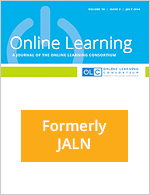How do Online Students Differ from Lecture Students?
This study has two primary objectives. First, we want to know how students who enroll in online classes differ from their peers in traditional lecture classes. Our second objective involves both exploring what factors influence performance among online students, as well as whether those factors differ for online and lecture...

